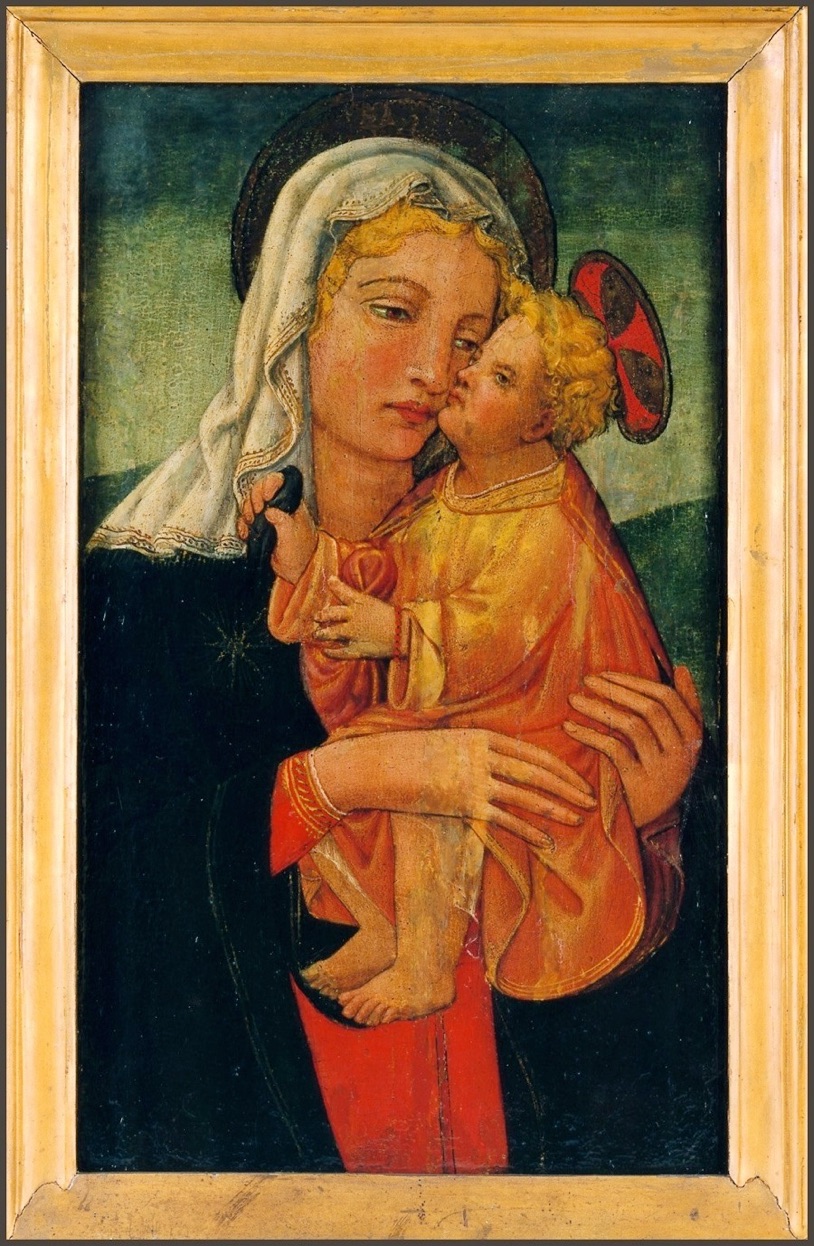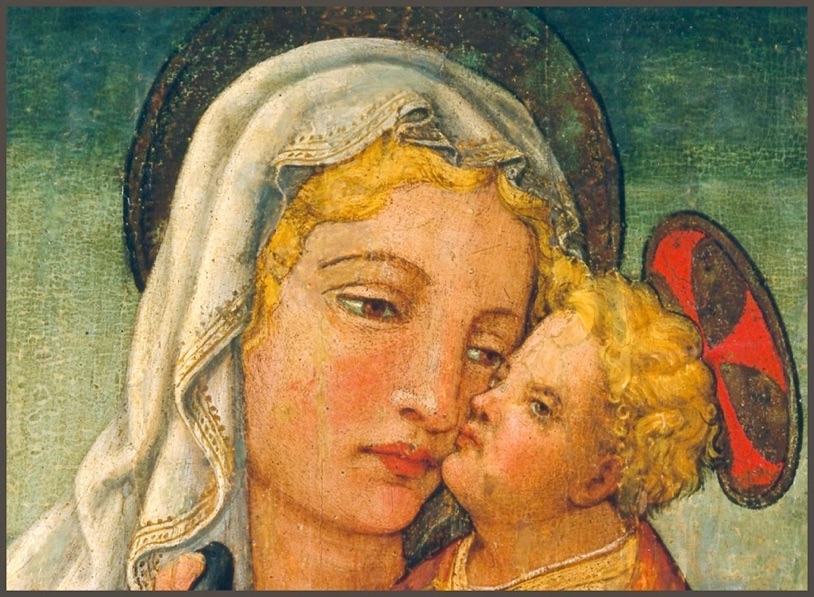The Digitalisation Project Castle Huis Bergh is the intellectual property of the Stichting Musick’s Monument. Ing Hans Meijer was responsible for the technical realisation; Dr Willem Kuiper for the scholarly input. Thanks are also due to the Anjer Cultuurfonds Gelderland; the Stichting de Verenigde Stichtingen “De Armenkorf” in Terborg and “Het Gasthuis te Silvolde”; Mrs P. Tijdink-Hermsen; Mrs L.J.C. Meijer-Kroonder; and the Giese family.




Panel
Florentine master, follower of Botticelli
Italy, Florence
Madonna and child 1470
Florentine painting, rapport ’91 Institute of Art History. Groningen:
follower of the young Botticelli.
Scarpellini: perhaps Master of San Miniato.
From the Ramboux collection, Cologne.
The face of this fifteenth century Mary seems reminiscent of Botticellis Venus in his Birth of Venus. It has been suggested that the artist was a follower of the young Botticelli. The Virgin is a true mater amabilis, a sweet mother caressing her son, holding him close. She looks sad, though, as if foreseeing her childs early death. He doesnt seem to notice his mothers sadness, playfully grabbing her collar. The star on Marys cloak is a reference to the meaning of her Hebrew name Miriam: star of the sea. The infant Jesus head is crowned by a nimbus with a cross in it. This particular type of halo is reserved for the depiction of Christ. In Byzantine art, however, it was used to indicate power and was worn by all sorts of powerful people, including not only Christ, but also Satan, probably the most unholy creature to be found in art. The painting is not well-executed in all its aspects: the artist had some trouble depicting Christs head and face, and the babys body seems to be floating in space, rather than resting on his mothers arms.

